How to Make Passover Rolls
(and Save Yourself from the Bondage of Matzah)
Do I have a recipe for you! It's not particularly well-know, but you've been looking for it all your life. It'll mean you can make yourself actual sandwiches during Passover, rather than the crumbly matzah-based messes you've endured all this time. I rescued it from an old booklet published by a cooking oil company in the 1950s, referenced by my grandmother z"l for 50+ years, and recently handed down to me. Here it is:
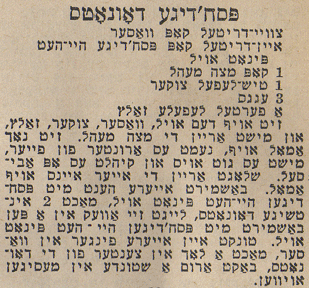
What's that, you can't read Yiddish? Neither can I. Truth be told, the pamphlet was published back-to-front in Yiddish and front-to-back in English.
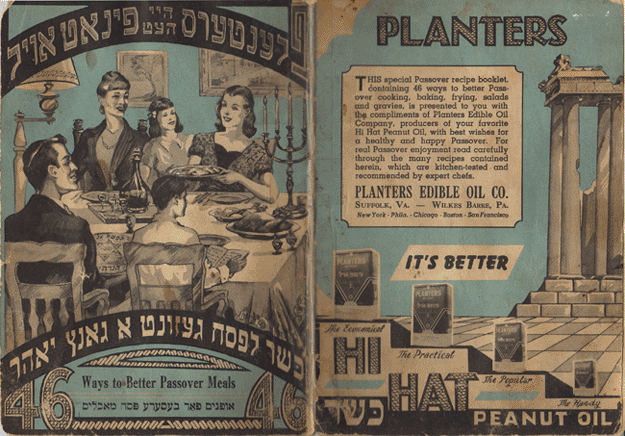
As you can see, the Planters Edible Oil Company, purveyors of peanut oil since 1906, distributed these recipes a way of encouraging Jewish housewives to use the company's "Hi Hat Peanut Oil" during their Passover preparations. What I find most interesting about this booklet as a cultural artifact is that the use of Yiddish means it is clearly advertising peanut oil to not-yet-assimilated Ashkenazi Jews. But Ashkenazi Jews don't eat kitniyot (legumes) on Passover, and peanuts are kitniyot!
Or so I thought. A bit of research shows that back in the day only some communities in Eastern Europe had prohibitions on peanuts, so in the early decades of the 20th century, peanut oil was certified Kosher for Passover by American rabbinical authorities for those Jews who had the custom of eating it. Even when I first made this recipe in 1993 I recall using Kosher for Passover peanut oil. Sometime since, unfortunately, these authorities pulled the fence around the law further out by invoking the "Eastern European Jews are easily confused" clause to outlaw peanut oil for everyone, since we none of us can be trusted any longer to know our family's minhag (custom). However, at the time Kosher certification was revoked, the peanuts-as-kitniyot and especially the peanut oil-as-kitniyot issues were by no means closed, a situation that persists to this day. Alas, the rabbis have spoken, Kosher for Passover peanut oil no longer exists, so I recommend you settle for walnut or cottonseed oil instead.
History lesson over; time to cook. Before you start, preheat oven to 350 degrees and grease a baking sheet.
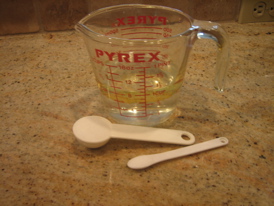
Start with 2/3 c. water, 1/3 c. vegetable oil,
1 T sugar, and 1/3 t. salt.
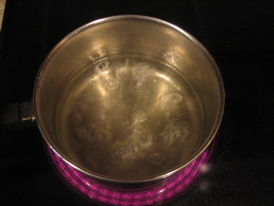
Combine in a small pot and bring to a boil.
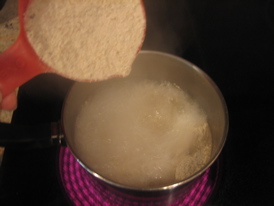
Stir in a cup of matzah meal.
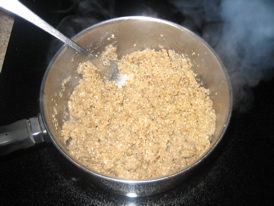
Boil for a second longer.
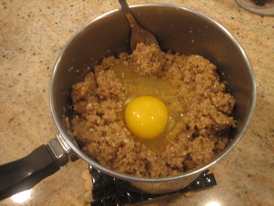
Allow mixture to cool slightly before adding eggs.
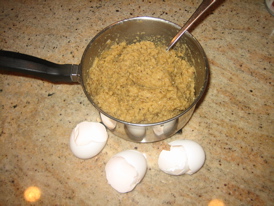
Stir in three eggs one at a time.
The next part is my favorite. This recipe was the first my grandmother ever taught me to make, when I helped make Passover seder for a Home Ec. assignment in 8th grade. I couldn't believe that in real, grown-up cooking one was permitted to make such a mess!
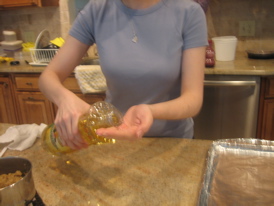
Grease your hands with vegetable oil.
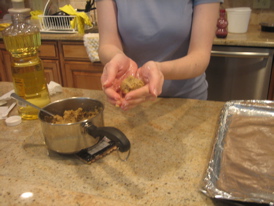
Take some of the matzah meal mixture from the pot.
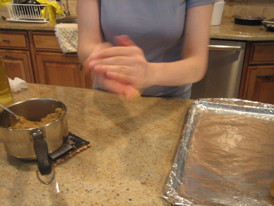
Form a round ball. The recipe recommends 2" in
diameter, but I find that makes the rolls too small for sandwiches, so I always make them bigger.
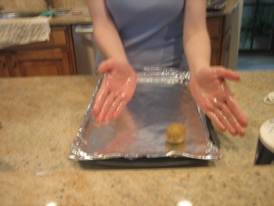
Arrange balls on greased baking sheet.
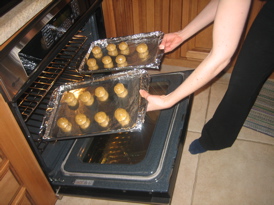
Put trays of rolls into preheated oven and bake for an hour.
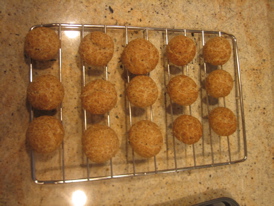
When finished, cool on a wire rack.
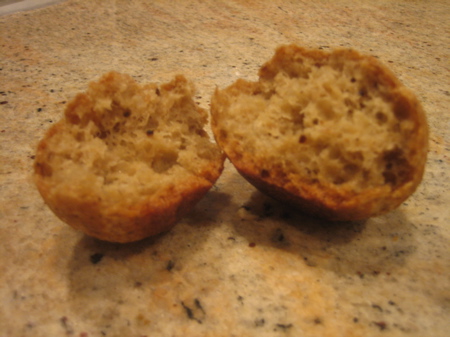
Here is the finished roll—crisp and golden brown on the outside, moist and airy on the inside. You will surely want more rolls than this recipe creates, but do not double it. It won't come out properly. Start subsequent batches each from scratch.
Every Passover when we have these rolls at seder for the first time in a year, my family and I agree all over again that these rolls are so delicious we'd willingly eat them year-round. Eight days of Passover roll-based sandwiches are a delight—one that now your family can share. I wish a Zisen und Freylikhen Pesach to you all!